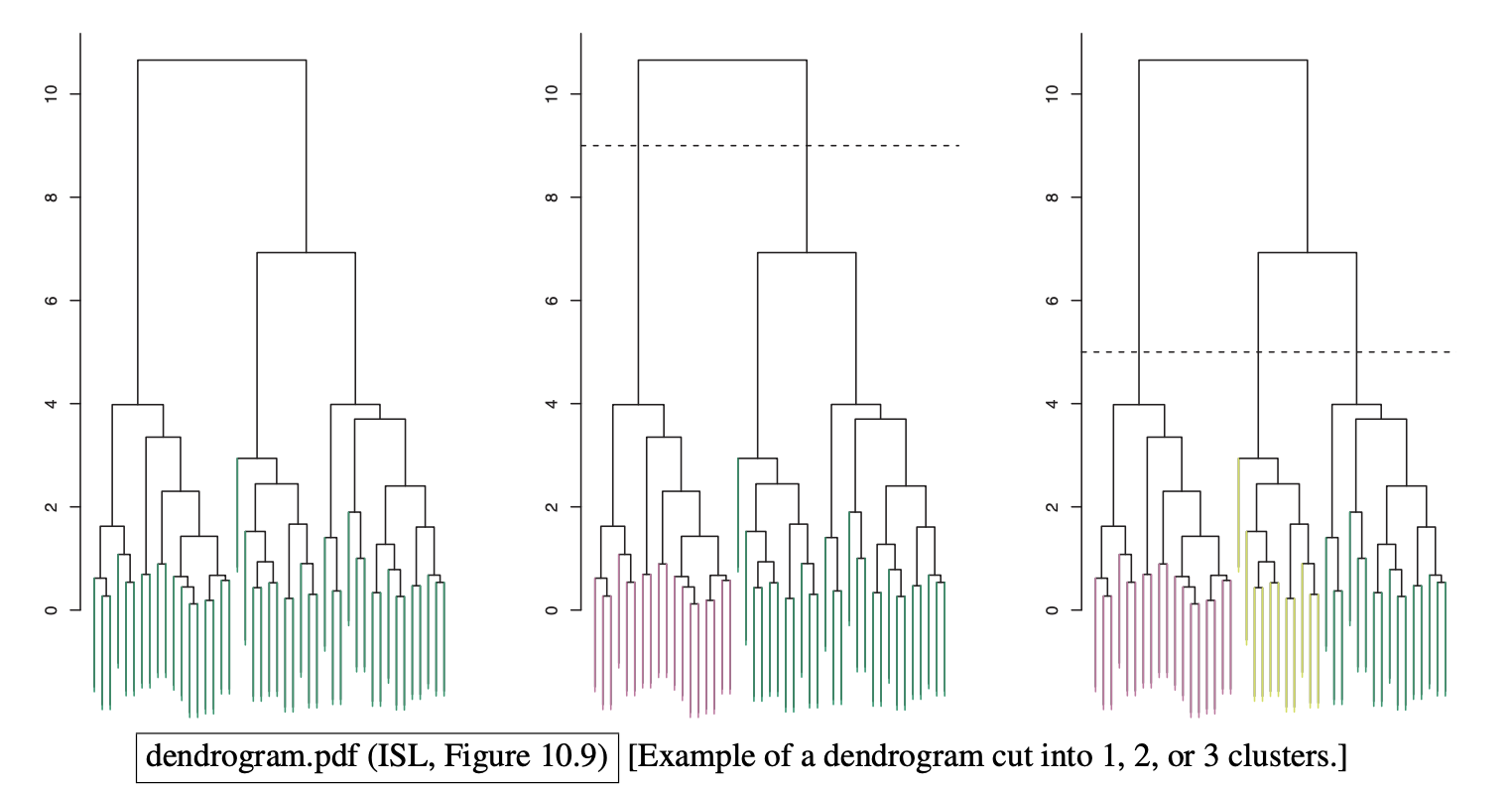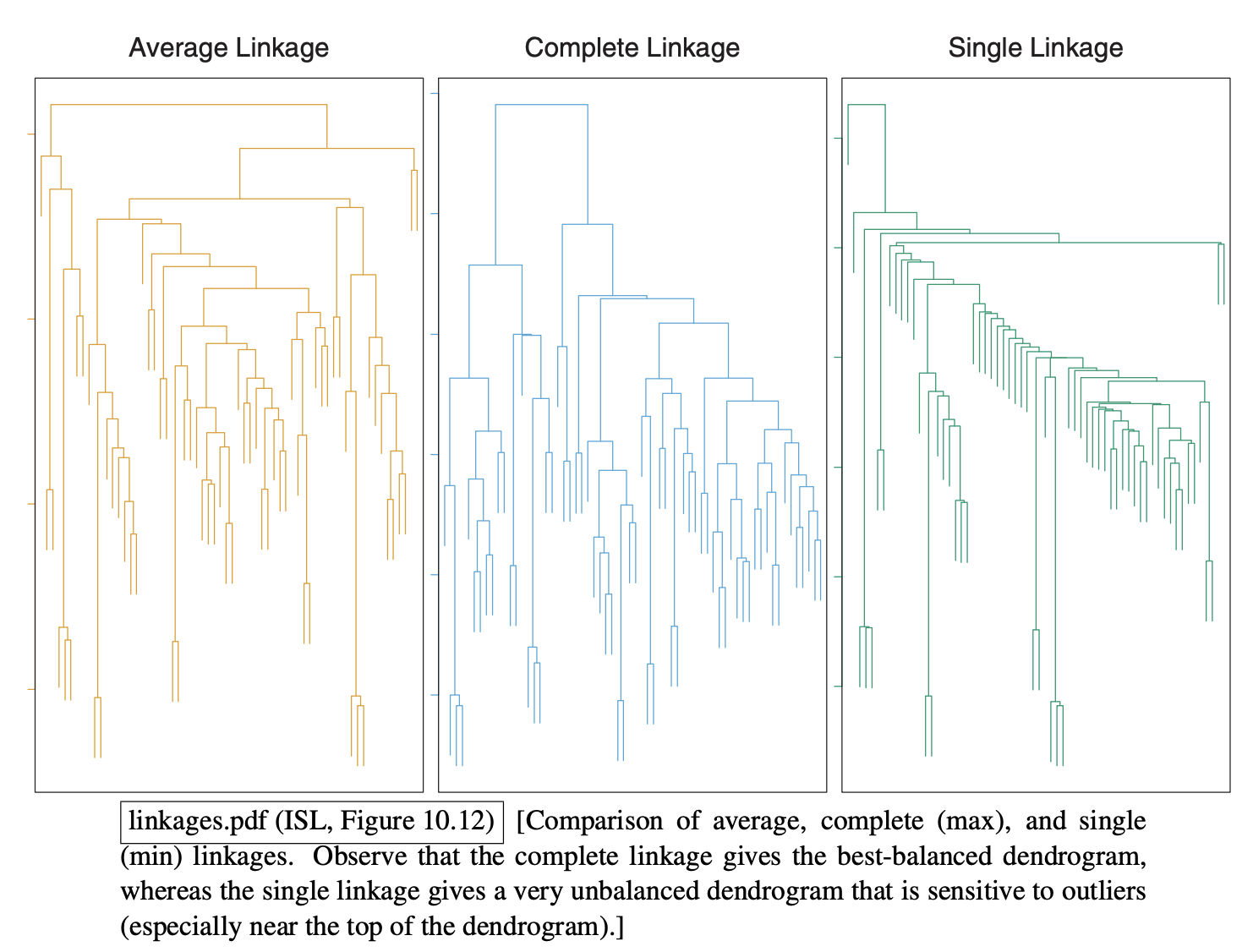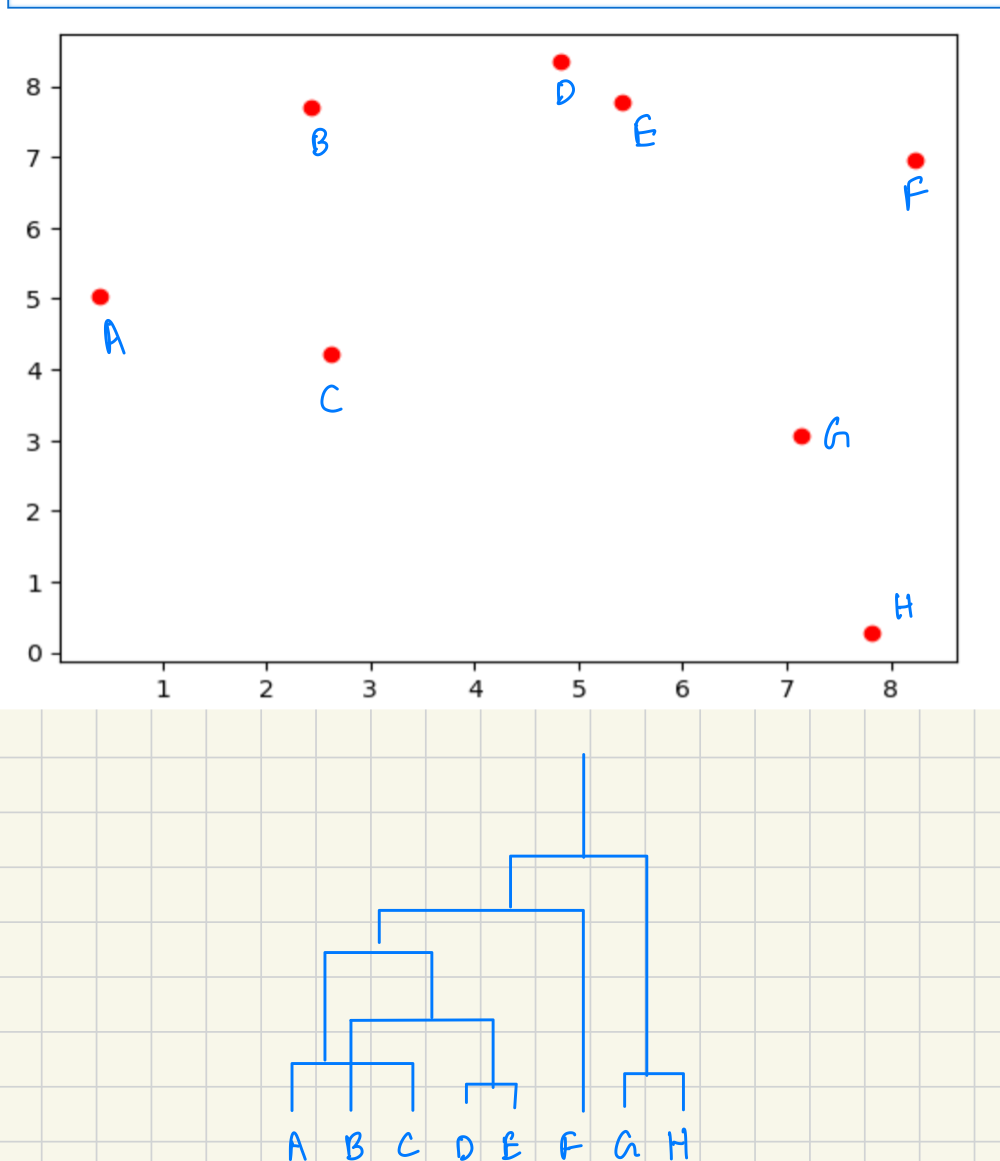In k-means clustering, we must commit to a number k before the algorithm starts. If we pick the wrong k, the algorithm will try to force the data to fit into k disjoint groups — wether it makes natural sense or not.
In Hierarchical Clustering, the advantage is that we don’t need to specify k beforehand. We build a full tree based on a specific technique, and pick a cut height and instantly get those clusters.
Hierarchical Clustering creates a tree and every subtree is a cluster. (Some clusters might contain smaller clusters. Not all trees will be balanced).
Types of Hierarchical Clustering
- Bottom-up | Agglomerative Clustering
- Top-down | Divisive Clustering
- When the input is a point set, agglomerative clustering is used much more in practice than divisive clustering.
- When the input is a graph, we use divisive clustering more often.
But, How do we put the points into clusters? We need some sort of measures.
Distance function for Clusters A and B
These distances are called linkage.
- Complete Linkage:
- Single Linkage:
- Average Linkage:
- Centroid Linkage:
Warning
- The first three linkages work for any distance function, even if the input is just an adjacency matrix with distances.
- The centroid linkage only makes sense for Euclidean distance.
Greedy Agglomerative Algorithm
- Repeatedly fuse the two clusters that minimize the linkage d(A, B).
- Naively takes time.
- For complete and single linkage, CLINK and SLINK can run in time.
Dendrogram
Cut dendrogram into clusters by horizontal line according to the number of clusters or the intercluster distance.



- Notice that the single linkage is prone to outliers and give very unbalanced trees. (e.g. k = 3 cut).
- The complete tends to be the best balanced. When a cluster gets bigger, the farthest point in the cluster is always far away. If balanced clusters is what we want, we should use max distance / complete linkage.
- In most applications, one use average or complete linkage.
- Centroid linkage can cause inversions where a parent cluster is fused at a lower height than its children. Centroid linkage is popular in genomics.
Jonathan Richard Shewchuk
As a final note, all the clustering algorithms we’ve studied so far are unstable, in the sense that deleting a few sample points can sometimes give you very different results. But these unstable heuristics are still the most commonly used clustering algorithms. And it’s not clear to me whether a truly stable clustering algorithm is even possible.